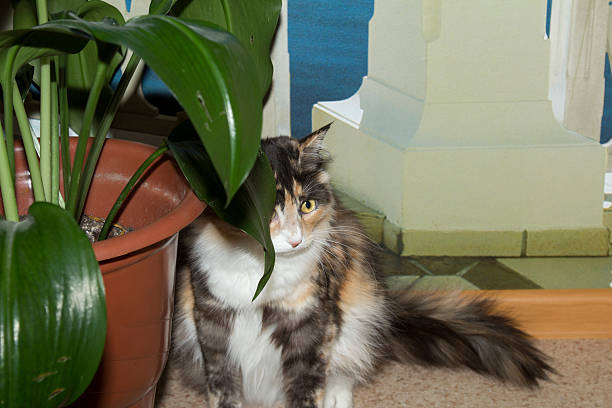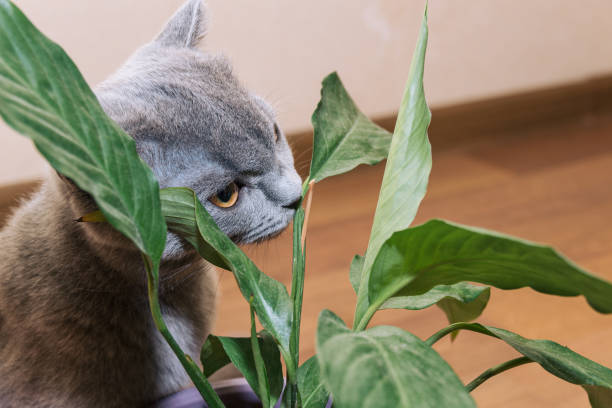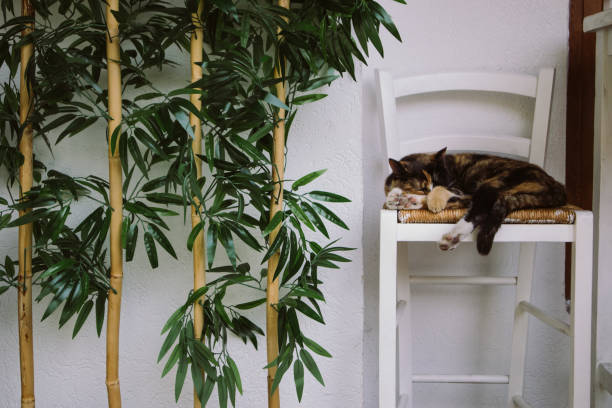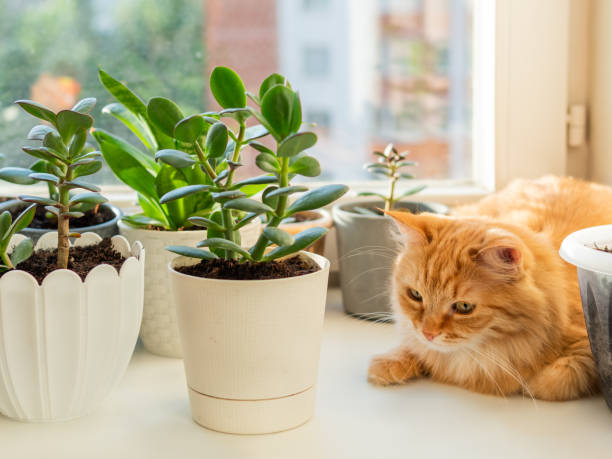Cat-Friendly Plants For the Home
There are many cat-friendly plants that can add a tropical flair to your home. These include kentia palms and parlour palms. They are easy to maintain and grow quickly. They can also survive in low to moderate light conditions.
The air plant (Bromeliad) is another popular houseplant that looks cool and needs little maintenance. However, it is toxic to cats and can cause oral irritation, excessive drooling, and vomiting.
Fiddle leaf fig
Fiddle leaf figs are a popular choice for home interiors as they add an exotic touch to any space. However, they can be mildly toxic to cats. When ingested, their sap releases sharp calcium oxalate crystals that can cause mouth and gut irritation. The symptoms of ingesting the plant’s sap include drooling, vomiting and a tummy upset.

Those with a cat in the house should consider using a strong-smelling plant barrier around the fiddle leaf fig, or putting it on a high stand. This will prevent your pet from getting close enough to gnaw on it. If you’re not comfortable with a barrier, consider using an organic vet-approved pet repellent.
When it comes to feeding a fiddle leaf fig, the general rule is to water it when the top couple inches of soil are dry. Overwatering can damage the roots of the plant, while under-watering can lead to stunted growth. It’s also important to keep the fiddle leaf fig away from vents and drafts as they can reduce humidity levels and wilt. The best place for the plant is a bright, sunny spot.
Peace lily
The Peace lily (Spatha foliaris persistens) is an easy-to-care-for houseplant that is non-toxic to cats. It also removes toxins from the air, making it a great addition to any home.
This plant thrives in medium or low light conditions and loves humidity. It’s also great for terrariums. The plant’s beautiful green leaves and white flowers add color to any space.

The peace lily is sensitive to over-watering, so the soil should dry between waterings. The plant can also be prone to root rot, so it’s important that the container the plant lives in drains well. The plant will let you know it needs a watering by drooping a bit, so it’s a good idea to pay attention to its watering habits.
The peace lily is fairly resistant to insect pests, but it can be attacked by fungus gnats and other common houseplant insects. The plant can also be affected by magnesium deficiency, which results in brown leaf tips. To prevent this problem, avoid fertilizing the plant and use a fertilizer that’s lower in strength than recommended.
Areca palm
The Areca palm (Dypsis lutescens) is an excellent houseplant that is both beautiful and easy to maintain. It thrives in bright indirect light but can survive in moderate to low light conditions as well. Water it frequently but infrequently to avoid overwatering. Its disc-like leaves will let you know if it has gone too long without water because they’ll begin to droop.
This plant is not only aesthetically pleasing, but its gentle rustling fronds can help to forge a calming environment in your home. This can help to reduce stress levels for both you and your cat. While it is completely safe for cats to nibble on the fronds of this plant, they may experience some gastrointestinal upset if they do so in large quantities.
Ferns are great for brightening up any space with their lush green foliage. They can be placed in terrariums, hanging baskets, or even on their own as a decorative houseplant. They like bright filtered light, but do not tolerate direct sunlight as it scorches the leaves. Keep it misted to add humidity, but be careful not to overwater. Overwatering leads to root rot and will cause the fronds to brown.
Bamboo palm
The Bamboo palm (Chamaedorea seifrizii) is a popular houseplant that can add a tropical flair to your living space. Although it is a member of the bamboo genus, it does not require a full dose of sunlight like real bamboo. This makes it a perfect plant for low-light areas. The Bamboo palm also does well in a variety of soil conditions, including high humidity.
This tropical beauty is easy to care for and can add a pop of color and elegance to any room. It can also help with air purification, removing harmful toxins such as formaldehyde and benzene. It also helps regulate indoor humidity levels, which can reduce the risk of respiratory problems.

To keep your Bamboo palm healthy and vibrant, water it regularly and use a balanced liquid fertilizer a few times a year. You should also repot the plant every spring or summer. This can be done by carefully removing the existing plant from its container and placing it in a new one. Make sure the pot has plenty of drainage holes.
Rubber tree
Rubber plants are easy to grow, no-fuss houseplants that look good in almost any room. They can withstand a wide range of light conditions, but they prefer bright indirect sunlight. They also have a more unique foliage than most other indoor plants. To keep them healthy, use a soft cloth to wipe their leaves as needed. Be careful not to damage new, thin leaves. Once they snap, the damage stays for the plant’s entire life.
Like most other plants, rubber trees can be toxic to dogs and cats if ingested. The latex in the plant’s sap can cause a skin reaction in some people, so it is important to keep the plant away from children and pets.
The rubber tree grows best when the soil is consistently moist. The plant should be allowed to dry out in between waterings, however, as overwatering can lead to root rot. When the plant is in bloom, you should reduce the frequency of watering. The leaf color will fade in the winter, so water it sparingly during this time.


Comments are closed.